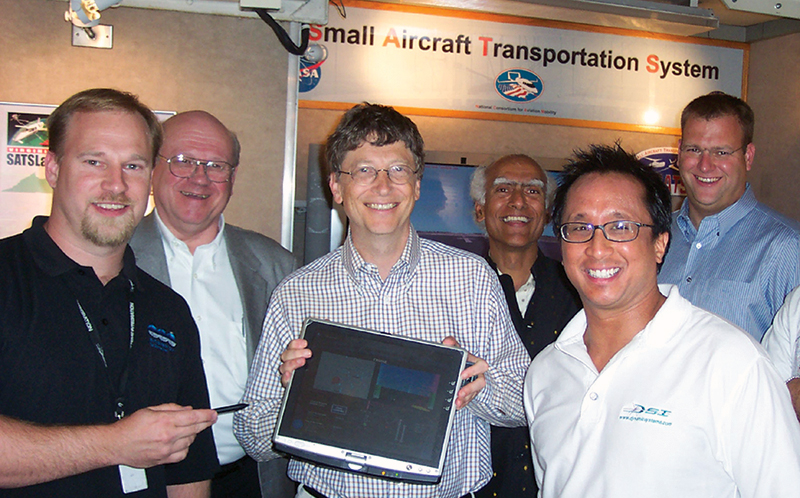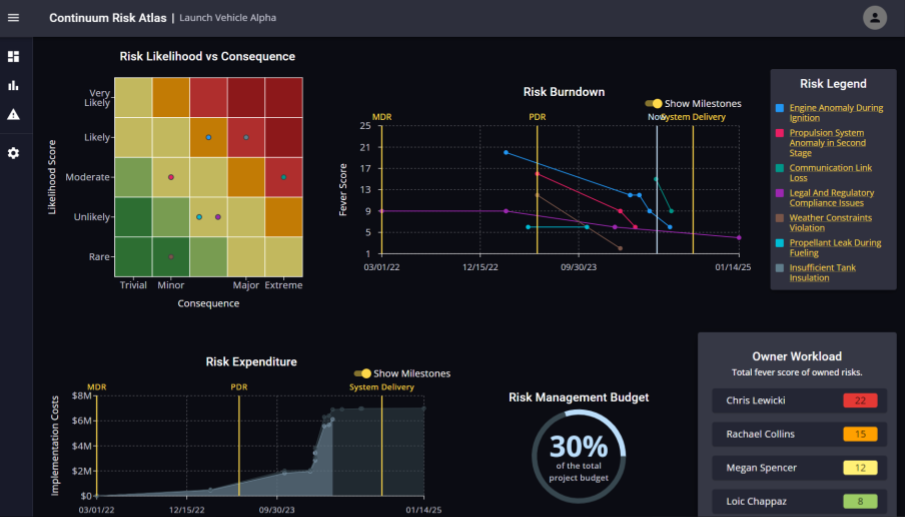
NASA Helps Design the ‘Cockpit of the Future’
Originating Technology/NASA Contribution
Langley Research Center conducts research in support of all of the aeronautics project at NASA. It continues to forge new frontiers in aviation research, as it has since 1917, when it was established as the Nation’s first civilian aeronautics laboratory. Langley’s mission and contributions to aerospace, atmospheric sciences, and technology commercialization are improving the way the world lives and flies.
One of the initiatives at Langley involved the research and development of a Small Aircraft Transportation System Network (SATS-Net), which was the communications infrastructure for NASA’s SATS program.
SATS research focused on four operating capabilities that may help permit people and goods to travel faster and farther, anywhere and any time; higher volume operations at airports that do not have control towers or terminal radars; pilots to land safely in low-visibility conditions at minimally equipped airports; increased single pilot performance; and SATS aircraft to integrate seamlessly into the complex national airspace.
The primary goal of SATS-Net was to develop secure virtual travel portals for the Nation’s general aviation airports and to offer an alternative to commercial air and ground transportation through general aviation. The secondary goals were to increase mobility, reduce door-to-door travel times, and provide air transportation to underserved markets at an affordable cost. One of the specific plans was to create a network of information about the 2,000-plus non-tower, non-radar airports in the Nation.
This information would be accessible from a person’s home, office, PDA, or local airport. This network provides real-time information and would be a “one-stop shop” portal with dynamic access to real-time Web cameras for weather conditions, flight planning information, local lodging, restaurants, and attraction information. SATS-Net would provide membership services much like that of AAA.
Partnership
Dynamic Systems Integration (DSI) of Virginia Beach, Virginia, a voice, video, security, and data communications firm, partnered with Langley through a Small Business Innovation Research (SBIR) contract to develop a new system to assist in the data management for SATS-Net.
The project aimed at developing a system that would give pilots and passengers of small aircraft centralized access to information about local airports and travel information for the areas in which they are based, via the Internet.
Edwin Tirona, president of DSI, said of the experience, “We’re very excited about the SBIR program. It takes some of the risk out of the process and still allows you to create a revenue-producing product.”
Product Outcome
DSI has pushed its NASA SATS research in several directions, mostly as part of its Assured Aviation Web Services (AAWS) product, one of the key components in creating the airborne Internet.
The company partnered with Microsoft Corporation to create the Connected Cockpit of the Future, which has the potential to make flying an aircraft as safe, easy, affordable, and connected as driving a car, but without all of the headaches and traffic problems found on today’s highways.
The Connected Cockpit of the Future is built on a Microsoft platform, allowing it to extend and embrace third-party applications through a new, aviation-grade communication standard that allows multiple applications to collaborate and share information.
A pilot enters flight information into a portable device. This can be done anywhere. The portable device is docked into the Connected Cockpit of the Future, where the information is downloaded, and the cockpit responds to the input by realigning itself and reorganizing its displays to match that pilot’s user preferences, so that information is available to the pilot in familiar formats.
After the interface makes accommodations for user preferences and destination, it then runs through a series of checklists and monitors plane status. The system alerts the pilot both visually and by voice of any current or potential problems, then automatically connects to and receives clearance from the SATS Airport Management Module (AMM) to taxi. The AMM is a centralized, automated airport arbiter and sequencer. It receives requests from aircraft via data link and grants or denies access. The AMM also provides estimated times of arrival when access is granted and an “expect further clearance” time when access is denied.
Once the AMM has granted clearance, the cockpit display anticipates the information the pilot will need and makes it available at the most opportune time according to what stage of the flight the pilot is in and according to the predefined user preferences.
Another area where DSI used its NASA research is the subscription-based Web site, Airtraveler. The service provides pilots with up-to-date, detailed information about weather and airports, including the scope and amenities each airport provides, whether it is a full-service facility, or has landing facilities for seaplanes or helicopters. Pilots can access necessary assessments of the ground conditions from up in the air. Before landing, aircrews can even make arrangements for rental cars, read restaurant reviews, and learn about local attractions. It is a realization of the airborne Internet.
Microsoft® and Windows® are registered trademarks of Microsoft Corporation.

Screen shot from the Airtraveler Web site, a first step in the realization of an airborne Internet.

NASA, Dynamic Systems Integration, and Microsoft Corporation collaborated to create the Connected Cockpit of the Future, a Windows-based collection of NASA’s Small Aircraft Transportation System Network (SATS-Net) information available online. Members of the team pose here with Bill Gates, Microsoft chairman.













